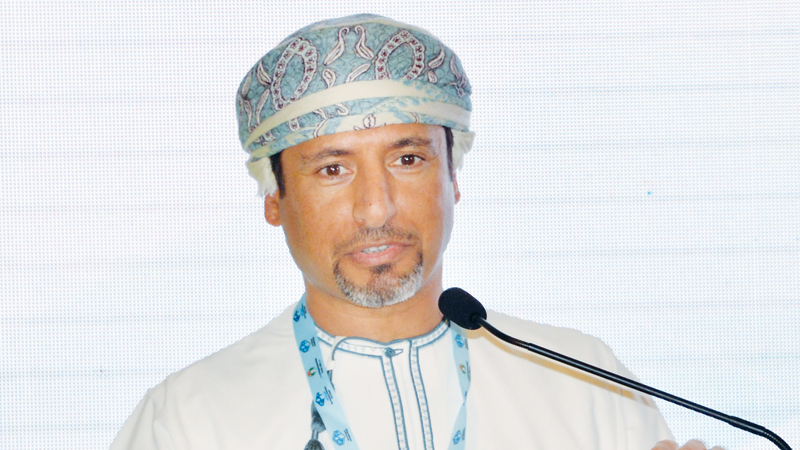

New gas finds have bolstered the Sultanate’s total gas reserves to 24.96 trillion cubic feet (TCF) as of end-2017, boosted by additional volumes uncovered primarily in the Khazzan and Ghazeer fields of Block 61 in central Oman, according to the Ministry of Oil & Gas.
Not included in the tally is the “significant” find of 4.4 TCF announced by Petroleum Development Oman (PDO) at Mabrouk North-East in its Block 6 concession. PDO made the revelation at the Annual Media Briefing hosted by the Ministry of Oil & Gas on Monday.
Figures released by the Ministry at the press briefing indicate that new gas discoveries with 4.97 TCF of new reserves were added to the national total in 2017, up from 3.81 TCF of new volumes reported in 2016.
Oil and condensate reserves, on the other hand, totalled 4.740 billion barrels as of end 2017. But despite the addition of 355 million barrels of oil and condensate from exploration activities and revaluation of some producing fields, the tally for 2017 still dipped by 376 million barrels. The decline was attributed to the transfer of around 323 million barrels of reserves into recoverable reserves based on a recovery in prices.
Giving details about the Oil & Gas sector’s performance in 2017, Salim bin Nasser al Aufi (pictured), Under-Secretary of the Ministry of Oil & Gas, said that oil and condensate production averaged 972K barrels per day in 2017, down from 1004K in 2016. The decline was in line with Oman’s commitment to a joint Opec/non-Opec pact reached in December 2016 to curb global production.
The price of the Oman Crude Oil Futures Contract, traded on the Dubai Mercantile Exchange (DME), averaged $51.29 in 2017, which was higher by $11.15 per barrel over the previous year’s average, said Al Aufi. The highest price of $55.59 per barrel was recorded in December 2017, while the lowest was $44.54 per barrel registered in January 2016. Prices have since ranged between $60 — 65 since the start of 2018, he said.
Gas output averaged 112 million cubic metres per day, comprising 88 million m3 of non-associated gas and 19 million m3 of associated gas. The daily average also included 5 million m3 of gas imported via the Dolphin system, he said.
Oil and gas expenditure amounted to $11.4 billion in 2017, almost on par with the previous year’s tally of $11.3 billion, said Al Aufi. Around 72 per cent of this total spend occurred in the upstream sector, encompassing costs towards drilling, facilities, and so on. The remaining 28 per cent represented operating expenses.
The share of the oil sector was $7.9 billion in 2017, mirroring the sector’s 2016 spend of $7.9 billion. Gas expenditure amounted to $3.5 billion, up from $3.4 billion in 2016.
Of Oman’s total crude production of 355 million barrels in 2017, 83 per cent was exported to international markets, while the balance 17 per cent was processed locally by Orpic for the production of refined fuels and petroleum by-products primarily for domestic consumption.
China remained the biggest importer of Omani crude, lifting 77 per cent of total exports, followed by India with a 10 per cent share. Japan (4 per cent) and South Korea (3 per cent) were notable importers too, he said.
Of Oman’s total gas production of 41 billion cubic feet last year, 32 per cent was exported in the form of liquefied natural gas (LNG) by Oman LNG. The balance 68 per cent was consumed locally by the following sectors: Industry (36 per cent), Oil & Gas (33 per cent), Power / Water (30 per cent), and Manufacturing Parks of PEIE (2 per cent).
Oman Observer is now on the WhatsApp channel. Click here



